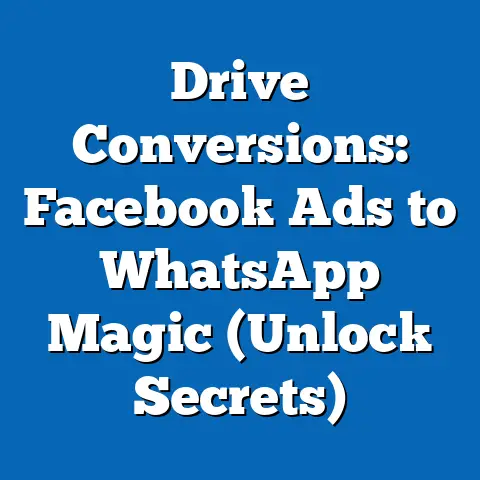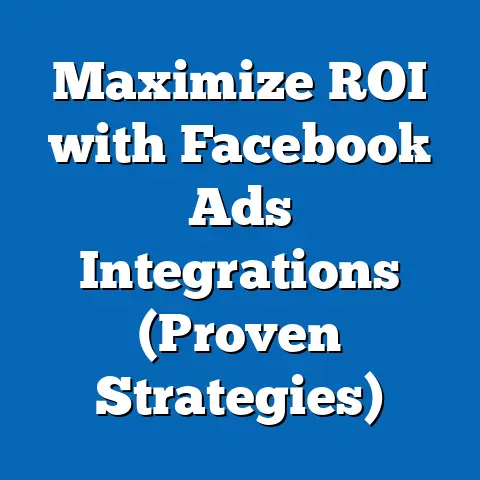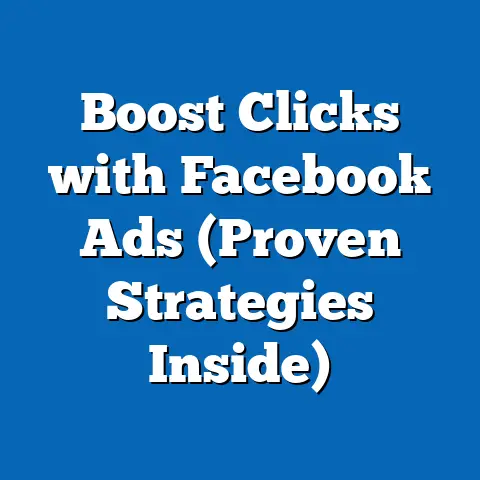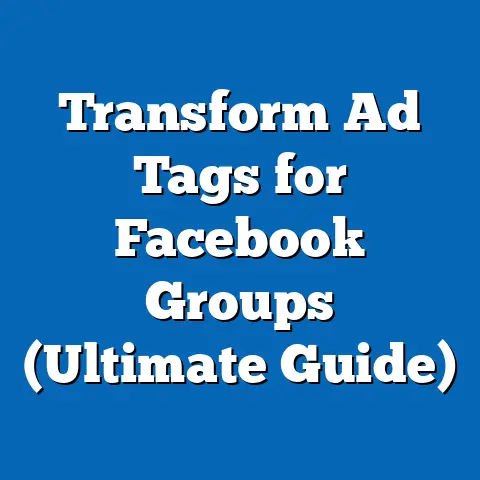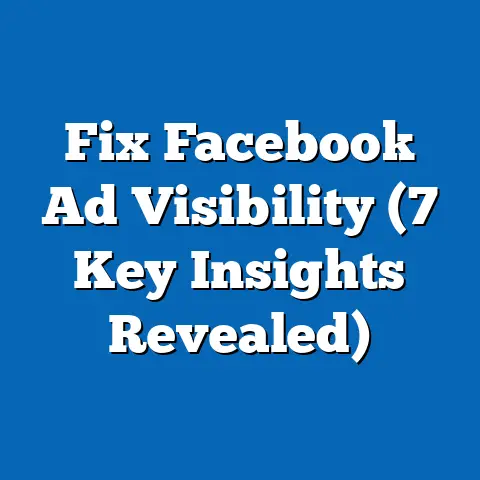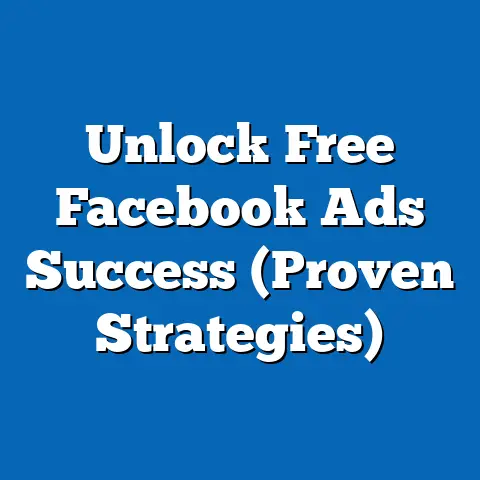Boost DCMS Facebook Ads Engagement (Proven Strategies)
Have you ever poured your heart and soul (and a significant chunk of your budget) into crafting the perfect Facebook ad, only to be met with…crickets? I’ve been there. It’s a common frustration, especially for those of us in the Digital Content Management System (DCMS) space. We create visually stunning content, meticulously target our audience, and still, the engagement feels… lackluster. It’s like shouting into the void. That’s why I wanted to share some proven strategies that I’ve learned over the years to boost engagement on DCMS Facebook ads. It’s about more than just pretty pictures; it’s about connecting with your audience on a deeper level and driving real results.
Understanding the Importance of Engagement in Facebook Ads
Engagement in Facebook ads is more than just vanity metrics. It’s the lifeblood of a successful campaign. When I talk about engagement, I’m referring to the whole shebang: likes, shares, comments, saves, and, critically, click-through rates (CTR). These interactions tell Facebook that your ad is relevant and valuable to the audience you’re targeting.
Why is high engagement so crucial? Well, for starters, it directly impacts your ad’s relevance score. Facebook uses this score to determine how well your ad matches the audience you’re targeting. A higher relevance score can lead to lower costs per click (CPC) and higher ad delivery. Think of it as Facebook rewarding you for creating ads that people actually want to see.
Beyond cost efficiency, engagement fuels overall campaign success. More engagement means more people are seeing your ad, interacting with your brand, and potentially becoming customers. It builds brand visibility and fosters user trust, which is especially important in the DCMS sector, where credibility and reliability are paramount. People are more likely to trust a DCMS solution that is actively being discussed and praised by others.
Takeaway: Engagement is the engine that drives successful Facebook ad campaigns. It improves ad relevance, reduces costs, increases brand visibility, and builds user trust.
Here are some strategies I’ve personally used and seen work wonders in boosting engagement on DCMS Facebook ads.1. Target Audience Refinement
This is where it all begins. If you’re showing your ad to the wrong people, it doesn’t matter how brilliant your creative is. You need to laser-focus your targeting.
Facebook’s audience insights are your best friend here. Dig into the data to understand the demographics, interests, and behaviors of your ideal DCMS customer. What are they passionate about? What websites do they visit? What other brands do they follow?
Custom audiences are another powerful tool. You can upload your existing customer list, website visitors, or app users to create highly targeted audiences. For instance, you can create a custom audience of people who have visited your pricing page but haven’t yet converted. This allows you to show them a targeted ad with a special offer or a compelling case study.
Segmentation is key. Don’t just target “digital marketers.” Segment your audience based on industry, company size, specific DCMS needs, and even their level of technical expertise. The more specific you are, the more likely you are to resonate with your audience.
Example: Instead of targeting “small business owners,” try targeting “small business owners in the e-commerce industry who are looking for a more efficient way to manage their product content.” See the difference?
Takeaway: Precise audience targeting is the foundation of successful Facebook ad engagement. Use Facebook’s audience insights and custom audiences to reach the right people with the right message.
2. Compelling Ad Creative
Okay, you’ve got the right audience. Now, you need to grab their attention with killer ad creative. This means high-quality visuals, compelling copy, and clear calls to action (CTAs).
Let’s start with visuals. In the DCMS world, showcasing the ease of use, organizational capabilities, or visual appeal of your platform is key. Use high-resolution images or videos that demonstrate the value of your solution. Consider before-and-after shots, product demos, or customer testimonials.
Your copy should be concise, benefit-driven, and emotionally resonant. Highlight the pain points your DCMS solves and the positive outcomes your customers can expect. Use strong verbs and action-oriented language.
Your CTA should be crystal clear. Tell people exactly what you want them to do: “Learn More,” “Get a Free Trial,” “Request a Demo,” etc. Make it easy for them to take the next step.
A/B testing is essential here. Try different ad formats (carousel ads, videos, static images), headlines, copy variations, and CTAs to see what resonates best with your audience. What I’ve found is that video often performs better for demonstrating complex DCMS features, while carousel ads can showcase a variety of benefits.
Example: A carousel ad showcasing different DCMS features with headlines like “Organize Your Content Effortlessly,” “Collaborate Seamlessly,” and “Publish Everywhere.” Each card could feature a short video demonstrating the feature in action.
Takeaway: Compelling ad creative is crucial for capturing attention and driving engagement. Use high-quality visuals, benefit-driven copy, and clear CTAs. Don’t forget to A/B test to optimize your creative for maximum impact.
3. Leveraging User-Generated Content
People trust people. That’s why user-generated content (UGC) is so powerful. When potential customers see real people sharing their positive experiences with your DCMS, it builds authenticity and trust.
Encourage your customers to share their experiences on social media using a specific hashtag. You can even run contests or offer incentives to encourage participation.
Once you have a collection of UGC, feature it prominently in your Facebook ads. Use customer testimonials, reviews, and case studies to showcase the real-world benefits of your DCMS.
Example: An ad featuring a customer quote like, “Since switching to [Your DCMS], our content creation process has become so much more efficient. We’ve saved hours each week!”
Statistics: Studies show that UGC can increase ad engagement by up to 28%. That’s a significant boost!
Takeaway: User-generated content builds authenticity and trust, leading to higher engagement rates. Encourage your customers to share their experiences and feature their content in your ads.
4. Utilizing Facebook Stories and Reels
Facebook Stories and Reels are rapidly growing in popularity. They offer a fantastic opportunity to engage users with short-form, visually appealing content.
Create engaging Stories and Reels that showcase your DCMS in action. Use behind-the-scenes footage, quick tutorials, or fun facts about your platform.
Integrate Stories and Reels into your existing ad campaigns for better engagement. You can use them to drive traffic to your website, generate leads, or even promote special offers.
Example: A Reel showing a DCMS user quickly organizing a large library of images with a voiceover saying, “Tired of content chaos? [Your DCMS] can help!”
Tip: Keep your Stories and Reels short, sweet, and visually engaging. Use music, text overlays, and creative transitions to capture attention.
Takeaway: Facebook Stories and Reels are powerful tools for engaging users with short-form content. Use them to showcase your DCMS in action, drive traffic, and generate leads.
5. Creating Value through Educational Content
People are more likely to engage with ads that provide value. Offering educational content, such as tutorials, tips, and webinars, can attract and engage potential customers.
Create lead magnets, such as ebooks, whitepapers, or checklists, that address common challenges in the DCMS space. Promote these lead magnets through your Facebook ads.
Example: An ad promoting a free ebook titled, “The Ultimate Guide to Content Organization for E-commerce Businesses.”
Host webinars or online workshops that teach people how to use your DCMS effectively. Promote these events through your Facebook ads.
Example: An ad promoting a webinar titled, “Mastering Content Workflows with [Your DCMS].”
Takeaway: Providing educational content attracts and engages potential customers. Create lead magnets and host webinars to showcase your expertise and build trust.
6. Engaging with Comments and Feedback
Don’t just launch your ads and forget about them. Actively engage with comments and feedback. This shows that you care about your audience and are responsive to their needs.
Respond to comments promptly and professionally. Answer questions, address concerns, and thank people for their feedback.
Manage comments effectively. Delete spam, remove offensive content, and address negative feedback constructively.
Tip: Use a social media management tool to streamline the process of monitoring and responding to comments.
Takeaway: Engaging with comments and feedback fosters community and engagement. Respond promptly and professionally, manage comments effectively, and use a social media management tool to streamline the process.
7. Incorporating Interactive Elements
People love to interact. Incorporating interactive elements into your Facebook ads can significantly boost engagement.
Use polls to gather feedback and learn more about your audience’s preferences.
Example: An ad asking, “What’s your biggest content management challenge?” with options like “Organization,” “Collaboration,” and “Publishing.”
Run quizzes to test people’s knowledge and educate them about your DCMS.
Example: An ad promoting a quiz titled, “Are You a Content Management Pro?”
Host contests or giveaways to generate excitement and engagement.
Example: An ad announcing a contest where people can win a free year of your DCMS by sharing their best content management tips.
Takeaway: Interactive elements like polls, quizzes, and contests encourage interaction and boost engagement.
Measuring Engagement Success
Now that you’re implementing these strategies, how do you know if they’re working? You need to track your key performance indicators (KPIs) and analyze your results.
Key KPIs for measuring engagement on Facebook ads include:
- Click-Through Rate (CTR): The percentage of people who see your ad and click on it.
- Engagement Rate: The percentage of people who interact with your ad (likes, shares, comments, saves).
- Cost Per Click (CPC): The amount you pay each time someone clicks on your ad.
- Relevance Score: Facebook’s rating of how well your ad matches the audience you’re targeting.
Use Facebook Ads Manager to analyze your performance metrics and make data-driven decisions. Track your KPIs over time and identify trends. What’s working? What’s not?
Based on your results, make adjustments to your targeting, creative, and bidding strategies. Ongoing optimization is essential for maximizing your engagement and ROI.
Tip: Set up custom reports in Facebook Ads Manager to track the KPIs that are most important to your business.
Takeaway: Track your key performance indicators (KPIs) and analyze your results to measure engagement success. Use Facebook Ads Manager to make data-driven decisions and optimize your campaigns.
Conclusion
Boosting engagement on Facebook ads for the DCMS niche requires a strategic approach. By refining your targeting, creating compelling ad creative, leveraging user-generated content, utilizing Facebook Stories and Reels, providing educational content, engaging with comments and feedback, and incorporating interactive elements, you can significantly improve your engagement rates.
Remember to track your KPIs and analyze your results to optimize your campaigns for maximum impact. With consistent effort and a data-driven approach, you can transform your Facebook ads from a shouting match into a meaningful conversation with your target audience. Now, go out there and start connecting with your audience! I’m confident that by implementing these proven strategies, you’ll see tangible improvements in your ad engagement rates and ultimately, your business results. Good luck!

